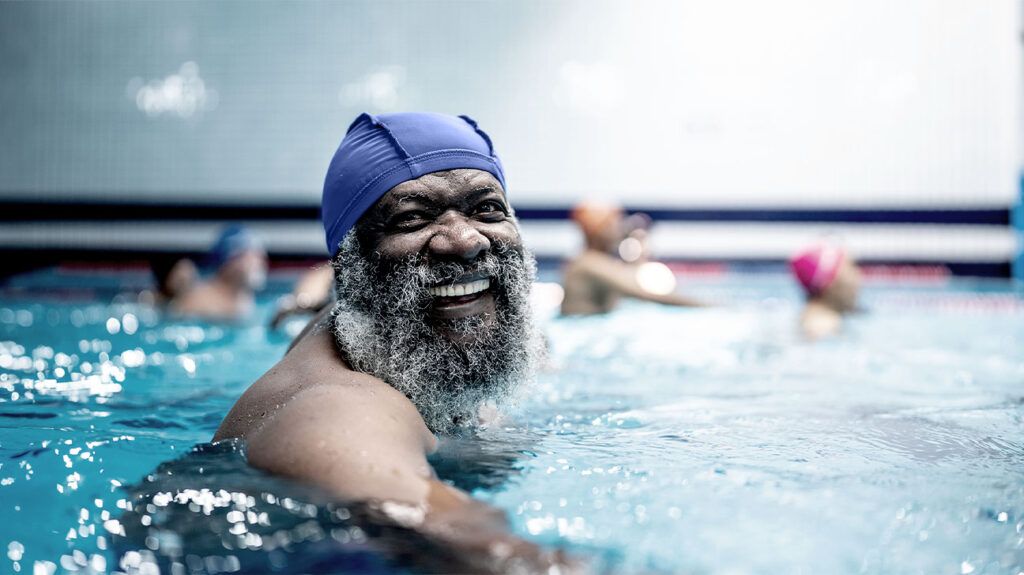Exercise greatly benefits brain health, improving cognition, mood and reducing the risk of neurodegenerative diseases. Several new studies have demonstrated the profound impact of exercise on various biological systems, further explaining its ability to enhance health and fight disease. In this Special Feature, we explore the most recent research on how exercise can protect brain health as we age.

Exercise is linked to increased muscle strength, improved heart health, lower blood sugar and numerous other health benefits.
Activities such as running on a treadmill, biking up a steep hill, lifting weights or taking a brisk lunchtime walk offer a wide range of advantages that go beyond enhancing physical appearance or stamina.
Evidence from studies suggests that regular physical activity could boost mood, alleviate stress, and sharpen cognitive function, underscoring the deep connection between body and mind.
However, different people can respond quite differently to various forms of exercise, such as aerobic workouts or strength training.
While it is well-known that regular exercise is crucial for a healthy lifestyle, some older research has suggested that intense exercise might have negative effects.
More recent research, however, showed that elite athletes experienced slightly extended life expectancies over the decades.
Exercise significantly enhances brain health by improving cognition, mood and by reducing the risk of neurodegenerative diseases through promoting neurogenesis and synaptic plasticityTrusted Source.
What does the latest evidence and expert opinion have to say about the ways in which regular physical activity helps maintain brain, as well as general, health as we age?
How exercise affects the body at the molecular level
In a new collaborative effort led by Stanford Medicine, researchers have explored the underlying mechanisms through which exercise promotes overall health, particularly brain health.
By understanding how exercise affects different organs at the molecular level, health care providers could tailor exercise recommendations more effectively.
This knowledge could also pave the way for developing drug therapies that mimic the benefits of exercise for those who are unable to engage in physical activity.
The study — whose findings appear in NatureTrusted Source — involved nearly 10,000 measurements across almost 20 types of tissues to examine the impact of 8 weeks of endurance exercise in lab rats trained to run on tiny treadmills.
Its conclusion reveals remarkable effects of exercise on the immune system, stress response, energy production and metabolism.
The researchers identified significant connections between exercise and molecules and genes that are already known to be involved in numerous human diseases and tissue recovery.
Other recent papers by Stanford Medicine researchers include a report in Nature CommunicationsTrusted Source that explores exercise-induced changes in genes and tissues associated with disease risk, and a paper published in Cell MetabolismTrusted Source, which examines the effects of exercise on mitochondria, the cellular energy producers, in various tissues, in rats.
How endurance training affects the body
The Nature study examined the effects of 8 weeks of endurance training on various biological systems, including gene expression (the transcriptome), proteins (the proteome), fats (the lipidome), metabolites (the metabolome), DNA chemical tags (the epigenome) and the immune system.
The researchers conducted analyses on different tissues in rats trained to run increasing distances and compared these with the tissues of sedentary rats.
They focused on mitochondria in the leg muscles, the heart, liver, kidney, white adipose tissue — which accumulates as body fat — as well as lungs, brain, and brown adipose tissue — a metabolically active fat that burns calories.
This comprehensive approach generated hundreds of thousands of results for non-epigenetic changes and over 2 million distinct epigenetic changes in the mitochondria, providing a rich database for future research.
Alongside the primary goal of creating a database, some notable findings emerged. For instance, the expression of mitochondrial genes changed with exercise across different tissues.
Researchers found that training upregulated genes in the mitochondria of skeletal muscle of rats that are downregulated in the mitochondria in the skeletal muscle of individuals with type 2 diabetes.
They also showed that training upregulated genes in the mitochondria in the livers of rats, that are down regulated in people with cirrhosis.
These two findings suggest that endurance training may help improve muscular function in diabetes, as well as boost liver health.
Does biological sex affect how we respond to exercise?
Finally, the researchers identified sex differences in how male and female rats’ tissues responded to exercise.
After 8 weeks, male rats lost about 5% of their body fat, while female rats did not lose a significant amount. However, the female rats maintained their initial fat percentage, whereas sedentary females gained an additional 4% body fat during the study.
The most dynamic difference was in mitochondrial gene expression after exercise in rats was in the adrenal glands.
The study authors propose that differences observed due to exercise are largely due to changes in mitochondrial genetic expression in organs and tissues responsible for maintaining energy balance.
Exercise’s rejuvenating effect on immune cells
Another study, this time completed by a research group from The University of Queensland in Australia, and published in Aging CellTrusted Source, demonstrated how exercise might deter or decelerate cognitive decline as individuals age.
Researchers examined gene expression in individual brain cells of mice, discovering that exercise profoundly influences gene expression in microglia, the immune cells supporting brain function in the central nervous system.
Specifically, exercise reverted the gene expression patterns of aged microglia to patterns akin to those seen in young microglia.
Experiments depleting microglia demonstrated their necessity for the beneficial effects of exercise on the creation of new neurons in the hippocampus, a brain region vital for memory, learning and emotion.
This study also revealed that providing mice access to a running wheel prevented or reduced the presence of T cells in the hippocampus as they aged.
These immune cells are typically absent in the youthful brain but increase with age.
Co-corresponding author Jana Vukovic, PhD, assistant professor and head of the neuroimmunology and cognition laboratory at The University of Queensland, explained the key findings to Medical News Today.
Vukovic explained that: “[T]he aging process affects all of the different cell types in the brain with the greatest impact on the resident immune cells: microglia. Importantly, exercise reverts the microglial gene profile back to their youthful state.”
Understanding how exercise supports brain health “is a key question for many scientists globally,” Vukovic noted, adding that she and her colleagues “propose that exercise alters the immune landscape in the ageing brain and therefore enables the immune cells to continue to support nerve cell function.”
“The role of microglia beyond being involved in clearance of cellular debris is not very well understood. We know that microglia support birth of new neurons in the hippocampus — a structure important for learning and memory. However, there could be many other mechanisms at play.”
– Jana Vukovic, PhD
Exercise strengthens brain cell connections
Ryan Glatt, CPT, NBC-HWC, senior brain health coach and director of the FitBrain Program at Pacific Neuroscience Institute in Santa Monica, not involved in these studies, told MNT they “underscore the multifaceted benefits of exercise on brain health, particularly through gene regulation, mitochondrial function, and immune response.”
“They offer valuable insights by merging molecular biology with practical health interventions for aging populations,” he added.
For example, “exercise enhances synaptic plasticity and blood flow while reducing inflammation and increasing the expression of neurotrophic factors like BDNFTrusted Source,” Glatt explained. “These effects can synergistically improve memory, learning, and overall brain health.”
“Exercise can influence gene expression related to brain plasticity, inflammation, and metabolism, while also enhancing mitochondrial function and modulating immune responses. Hormonal changes due to physical activity can also contribute to improved mood and reduced stress.”
– Ryan Glatt, CPT, NBC-HWC
The best forms of exercise for a healthy aging brain
Vukovic noted that “there are ongoing studies to optimise exercise programs for elderly; however, Pilates is a good starting point for those who are looking to engage their muscles.”
Glatt agreed, adding that “aerobic exercises like cardiovascular exercise, strength training, and balance exercises are particularly beneficial to brain health, in both shared and unique ways.”
“Activities combining physical and cognitive challenges, like dance or tai chi, can be especially effective for certain aspects of brain health,” Glatt said.
Nevertheless, he cautioned that: “While exercise benefits brain health, individual variability due to genetics and baseline health can affect outcomes. Further research is needed to determine the long-term sustainability and optimal exercise types and intensities for different populations.”















